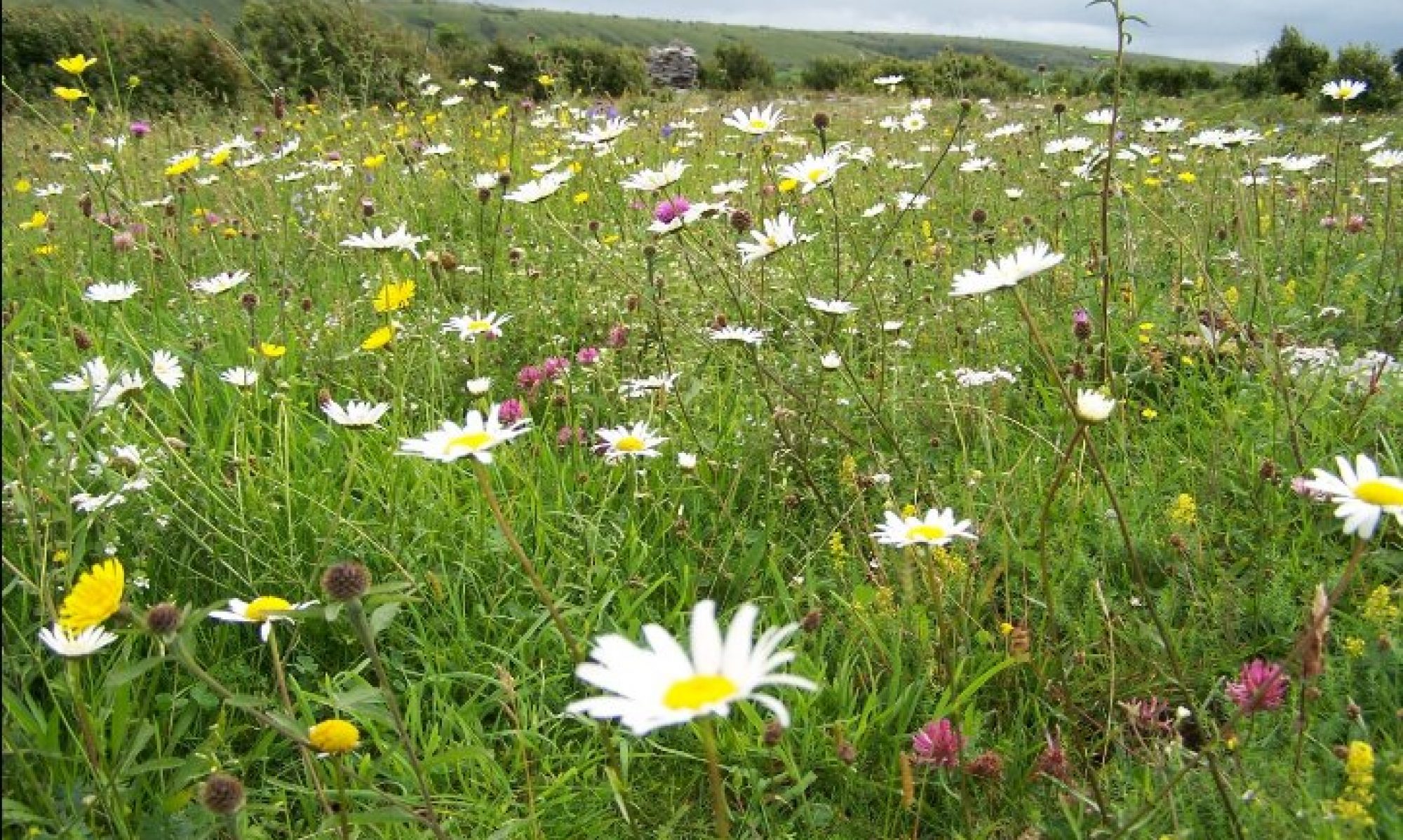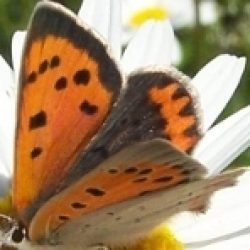The Painted Lady Vanessa cardui is an attractive migrant butterfly. It appears in Britain and Ireland every year. It is less numerous than the Red Admiral but more numerous than the Clouded Yellow, our other regular migrant butterflies. It is closely related to the Red Admiral and similar in size, with wingspans ranging from about 58mm to 74mm, with males smaller than females. Sexes look alike. Its uppersides are dark brown, orange and white with small, faint blue markings on the anal angle of the hindwings. The hindwing underside is mottled buff, white and slate blue, while the forewing pattern imitates the forewing upperside, but the broad band is pink, not orange. In fresh butterflies, the uppersides can show a lovely pink flush. The Painted Lady is seen in Ireland mainly during the summer and early autumn.
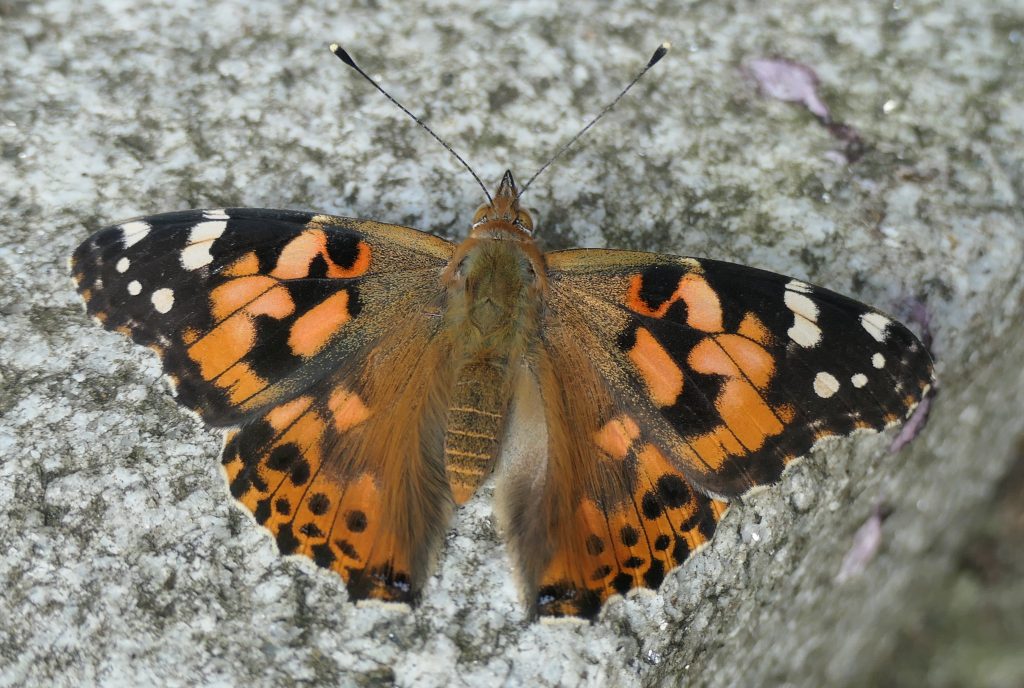
The butterfly is our most mobile species and can appear anywhere there are nectar sources, especially if thistles, the food for the larvae, are present. The butterfly breeds in Ireland during the summer, but the caterpillar cannot survive temperatures below five degrees Celsius. The Painted Lady has no ‘rest phase’ in its life cycle, and when conditions no longer favour breeding, the butterfly must migrate to find suitable conditions.
In the past, the view was that the Painted Lady migrated to Britain, Ireland and northern Europe, but that all life stages of the butterfly died when cold weather arrived. This view was supported by the almost complete absence of observed southward migration from northerly areas in autumn. However, research carried out since 2008 provides fascinating information about the butterfly’s migration.
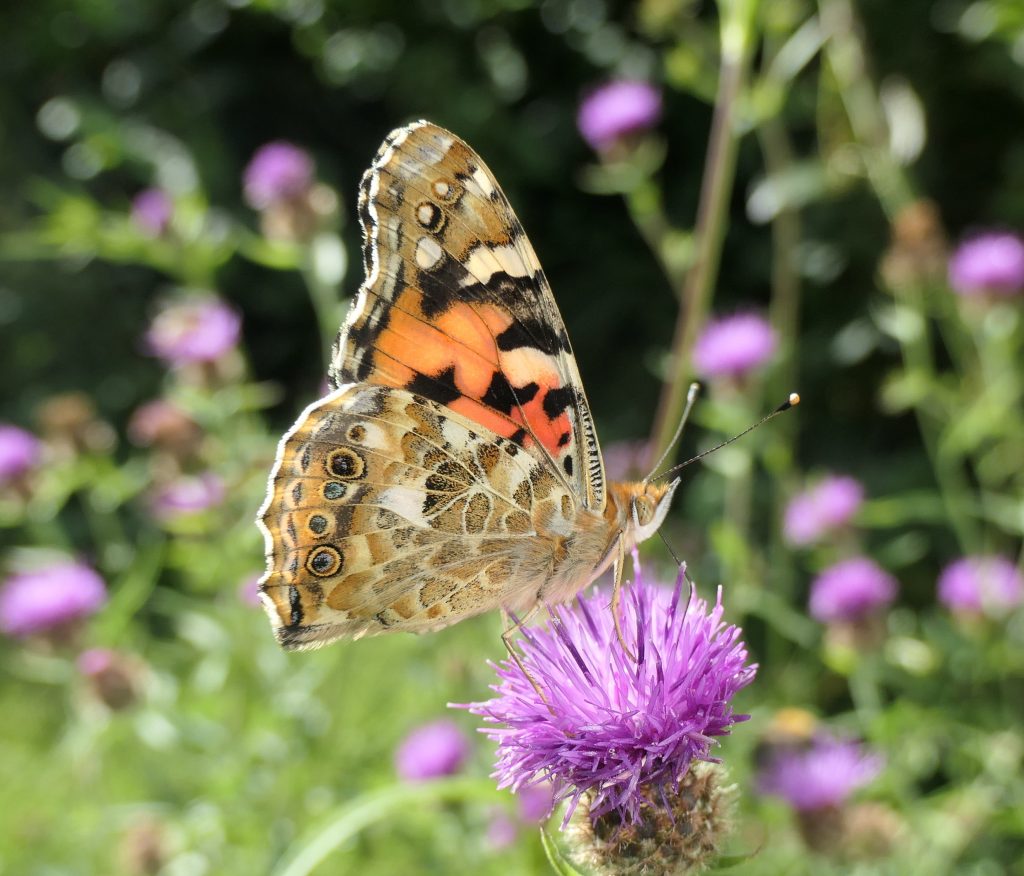
Where do Painted Lady butterflies migrate to? How do we know where migrating Painted Lady butterflies originate?
The Painted Lady performs an annual multi-generational migration between Europe and North Africa. Its seasonal appearance south of the Sahara in autumn is well known and has led to the suggestion that it results from extremely long migratory flights by European butterflies to seasonally exploit the Sahel and the tropical savannah. However, this possibility had not been proven. However, a study by Constanti Stefanescu and his colleagues that analysed the isotopic composition of Painted Lady butterflies from seven European and seven African countries provides support for this hypothesis. Each butterfly was assigned a geographical natal (birth) origin, based on its wing stable hydrogen isotope (d2 Hw) value and a predicted d2 Hw basemap for Europe and northern Africa.
Isotopes are two or more forms of the same element that contain equal numbers of protons but different numbers of neutrons in their nuclei and hence differ in relative atomic mass but not in chemical properties; in particular, a radioactive form of an element. Isotopes of hydrogen are different across Europe and Africa, with regional variations in their abundance due to differences in climate, rainfall patterns, and moisture sources. While the three main hydrogen isotopes (protium ¹H), deuterium (²H), and tritium (³H)) are naturally occurring, their stable isotopic ratios (expressed as δ²H) vary geographically, with more depleted values found in temperate and boreal regions of Europe and higher values closer to the tropics and coastal areas in Africa. These differences in hydrological hydrogen are reliable across Europe, North Africa and sub-Saharan Africa, enabling researchers to identify the origin of migrating Painted Lady butterflies.
Natal assignments of autumn migrants collected south of the Sahara (Sahel) confirmed long-distance movements (of 4,000 km or more) starting in Europe. Samples from Maghreb (north-west Africa) revealed a mixed origin of migrants, with most individuals having a European origin, but others having originated in the Sahel. Therefore, autumn movements are not only directed to northwestern Africa but also include southward and northward flights across the Sahara. Through this remarkable behaviour, the productive but highly seasonal region south of the Sahara (the area receives rain in June and July) is incorporated into the migratory circuit of the Painted Lady.
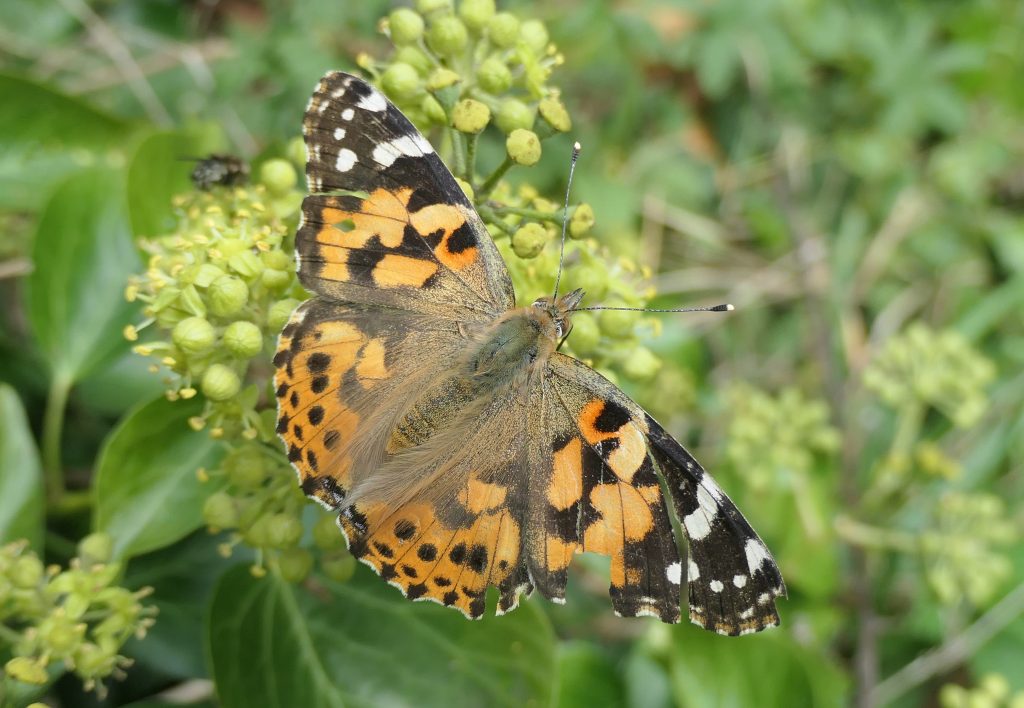
How do we know about high altitude migration, and how do Painted Lady butterflies travel such long distances?
Migration of the Painted Lady to north-eastern Spain is aided by African wind currents that show a strong correlation between wind patterns and the ability of the butterfly to migrate long distances in a corresponding direction, concluding that the butterfly rides on the wind currents in the upper levels of the atmosphere when undertaking long-distance flights. This was confirmed by Jason Chapman and Rebecca Nesbit using vertical-looking radar to show that the insects regularly fly at a height of up to 1,200 m. In the reverse (southbound) autumn migration in 2009, most flew at between 200 and 400 Chapman and Nesbit wrote: “Wind speeds 500m above the ground are often four or five times faster than the butterflies’ flight speed, so that if they are able to fly at these heights they could reach speeds of almost 100km/hr (60 mph)”. High altitude flights are prevalent southwards from Europe in autumn.
I observed how these high-altitude flights are launched by the Painted Lady and the Red Admiral. Individual butterflies typically use level flight when moving through the landscape, but in autumn, while migratory flight at eye level occurs, high altitude flight is mostly used. Individual butterflies fly upward in a vertical or near-vertical trajectory, eventually disappearing from the view of the observer on the ground. When a following wind is located, likely, level flight at altitude is then adopted to help the butterfly move toward its destination.
Journeys northwards into Europe in spring and summer are made by successive generations of Painted Lady butterflies. Stefanescu and his colleagues state: “The migratory cycle in this species involves six generations, encompassing a latitudinal shift of thousands of kilometres”. This is a round-trip extending from Africa to above the Arctic Circle of over 13,000 kilometres.
However, as stated earlier, we also know that individual Painted Lady butterflies fly as many as 4,000 km when migrating from Europe to sub-Saharan Africa in autumn.
Another method that has been used to track butterfly movement is telemetry, when radio tags are fixed to a butterfly. A tag fitted to a Swallowtail butterfly’s head was used to track its movements in the Maltese Islands over an approximate period of two weeks of field monitoring. The release site was Comino, the island between Malta and the second-largest Maltese Island, Gozo. Tagged Swallowtail Papilio machaon melitensis individuals were recorded to undertake a short sea crossing between the islands of Comino and Gozo, subsequently, each making their way to the northern side of Gozo. Each butterfly is estimated to have covered a minimum distance of approximately 16.6 km in 17 days.
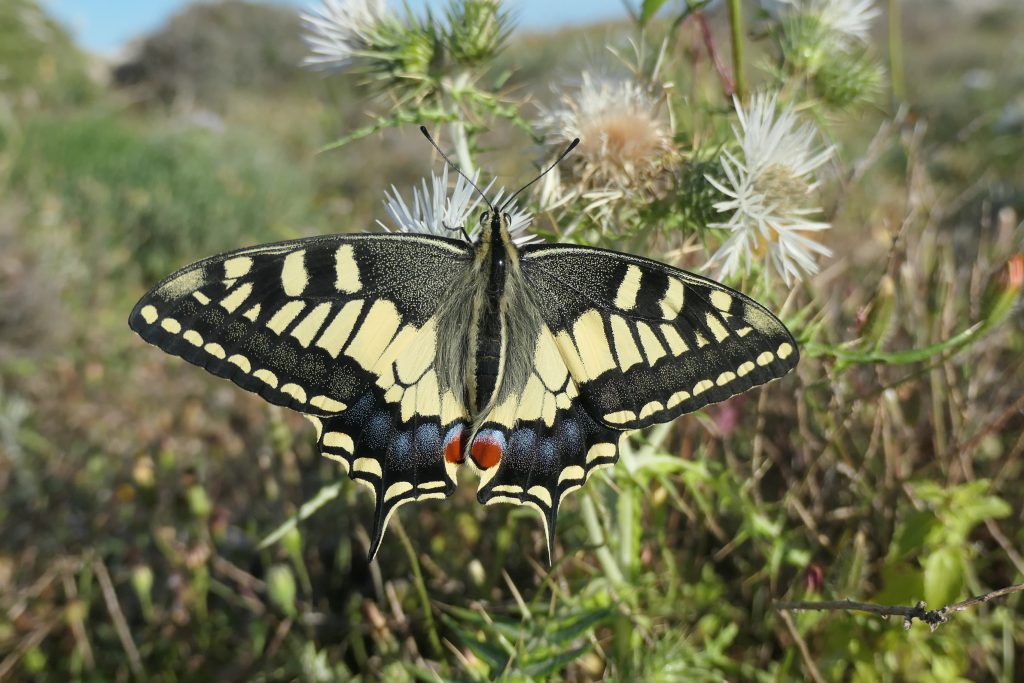
While the Swallowtail (wingspan up to 93mm) is larger than the Painted Lady, it is conceivable that the Painted Lady might be tracked using telemetry in the future. (The Swallowtail is dispersive within Malta, but elsewhere it will migrate. The migration rate of Papilio machaon in North America was estimated at 4.3 km per day in upwind conditions (Sperling and Harrison, 1994). In favourable weather conditions (downwind), this rate is probably higher.
What triggers the Painted Lady’s migration?
The research has concluded that the reason for migration is the need to locate and exploit abundant but temporary resources over large geographical areas. But what are the cues that drive the species to migrate? For now, these remain unknown.
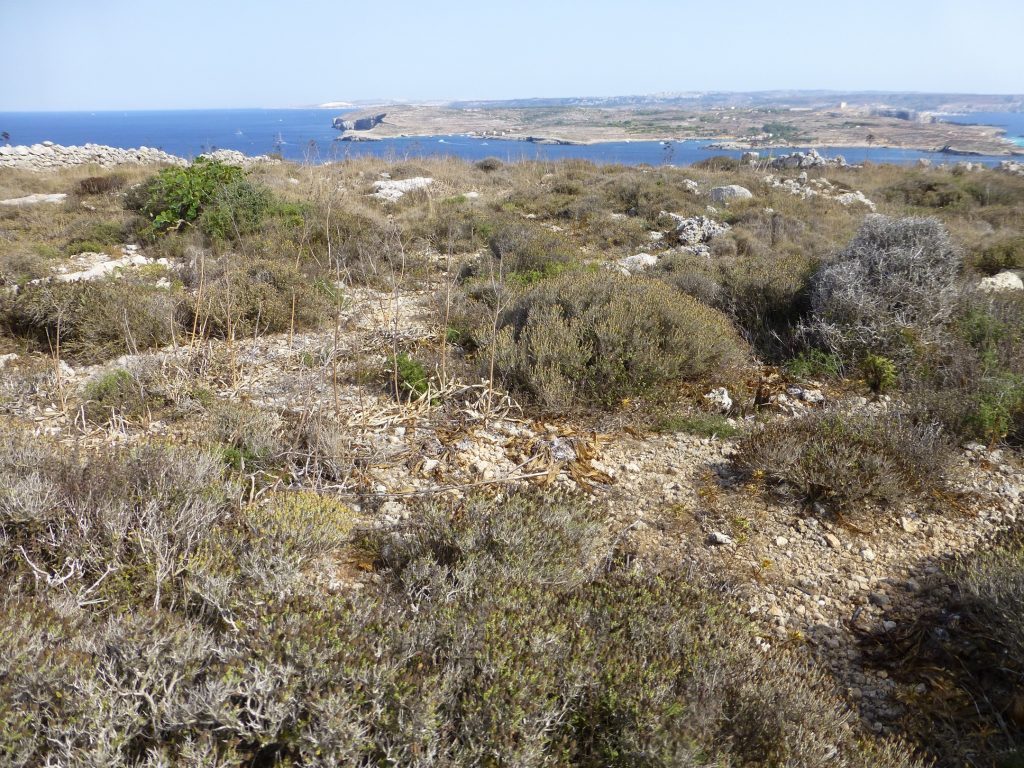
The theory is that northward migration in spring is triggered by population density, increasing daylight hours, increasing temperatures, increasing aridity and decreasing nectar and larval host plant resources. Southward migration from Europe might be triggered by the decreasing light levels, falling temperatures, and diminishing nectar and host plant resources.
The wonder of Painted Lady migration
Whatever the causes, the migration of the Painted Lady is a fascinating chapter in the story of our butterflies. Adding to this wonderment is the sheer scale of these mass movements. While some migrations occur over weeks and span wide geographical areas, others are concentrated over a shorter period of time and within narrower spatial zones. I saw hundreds of Painted Ladies in Kinvara, County Galway, on May 30, 2009, flying off the Atlantic to settle on Red Valerian, trees, shrubs and even the coast road where they were crushed by traffic. I travelled home that afternoon, watching the butterflies fly across roads during my eastward journey through Galway. It is estimated that 11 million Painted Lady butterflies arrived in these islands in May 2009, but that 21 million left Britain and Ireland that autumn. Many accounts of thousands of caterpillars were recorded. An estimated 500,000 Painted Lady caterpillars were recorded in two fallow fields near Port Isaac, Cornwall.
Another mass migration occurred in 2019, when millions arrived. One County Down gardener reported 100 or more in his coastal garden, on lavender, on August 1. Hundreds of adults were recorded on Tory Island, Co. Donegal, on the previous day.
An unusual aspect of the 2019 mass migration was that it followed two years of large migrations. Typically, the year or years following a mass Painted Lady migration see very low numbers in Ireland. In 2010, following the millions that arrived in 2009, the Painted Lady was very scarce in Ireland. I saw one Painted Lady in 2010, a famine following a feast. Another unusual feature of the 2019 migration is that it began on January 10, when at least 20 were seen near Bere Island on the south side of Fair Head, County Cork. However, the main arrivals occurred in June, July and August. High numbers were recorded during September 2019, but by mid-September, the figures declined as reverse migration occurred. Few were seen in Ireland during 2020.
Such spectacular migrations are impressive, but in California, one migration was estimated to contain three billion Painted Lady butterflies! Given its rapid development rate (the egg to adult stage I observed in 2019 lasted 54 days, but this will be shorter in warmer conditions), impressive migratory capability and the wide range of larval food plants it uses, it is understandable that it is probably the most successful butterfly on Earth, occurring on all continents except South America.
When you admire a Painted Lady in your garden in late summer or autumn, keep this thought in mind: in a few days, it could be flitting between blooms on the African savannah south of the Sahara, in the company of African Lions, Leopards and Dama Gazelles.
Key References
Chapman, J. W. and Nesbit, R. L. (2008). Mysteries of Lepidoptera migration revealed by entomological radar. Atropos. 35, pp. 28-36.
Grech, N. (2021). Investigating ecological corridors and barriers to movement: a species approach for conservation (Master’s dissertation). University of Malta https://www.um.edu.mt/library/oar/handle/123456789/94093
Sperling, F.A.H.; Harrison, R.G. (1994). Mitochondrial DNA variation within and between species of the Papilio machaon group of swallowtail butterflies. Evolution 48, 408–422.
Stefanescu C, Soto DX, Talavera G, Vila R, Hobson KA. (2016). Long-distance autumn migration across the Sahara by painted lady butterflies: exploiting resource pulses in the tropical savannah. Biol. Lett. 12: 20160561. http://dx.doi.org/10.1098/rsbl.2016.0561
Stefanescu, Constantí; Páramo, Ferran; Åkesson, Susanne; Alarcón, Marta; Ávila, Anna; Brereton, Tom; Carnicer, Jofre; Cassar, Louis F.; Fox, Richard; Heliölä, Janne; Hill, Jane K.; Hirneisen, Norbert; Kjellén, Nils; Kühn, Elisabeth; Kuussaari, Mikko; Leskinen, Matti; Liechti, Felix; Musche, Martin; Regan, Eugenie C.; Reynolds, Don R.; Roy, David B.; Ryrholm, Nils; Schmaljohann, Heiko; Settele, Josef; Thomas, Chris D.; van Swaay, Chris; Chapman, Jason W., Multi-generational long-distance migration of insects: studying the painted lady butterfly in the Western Palaearctic Ecography (Copenhagen), 2013-04 Vol.36 (4), p.474-486
All photographs copyright J. Harding.
